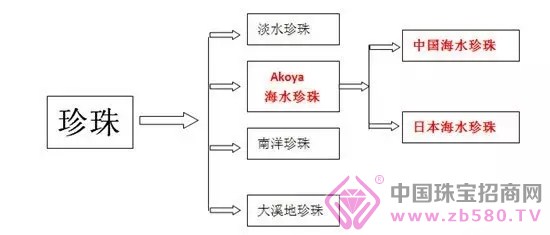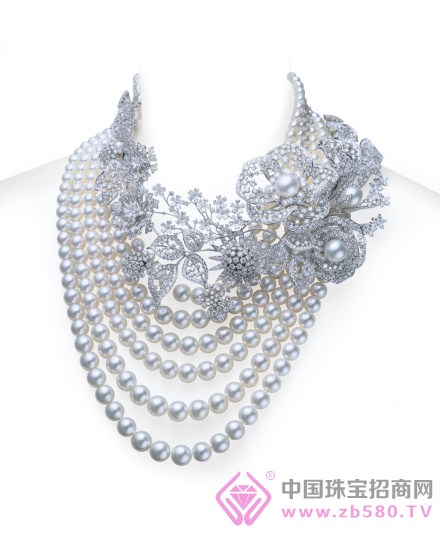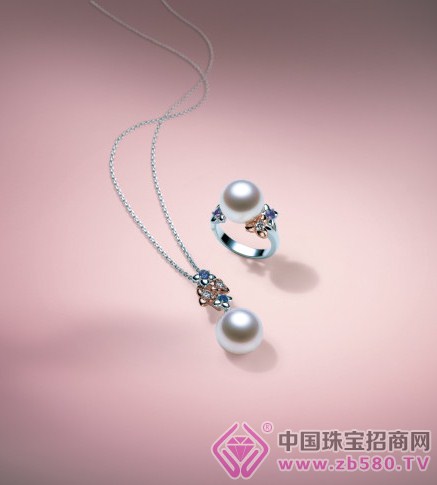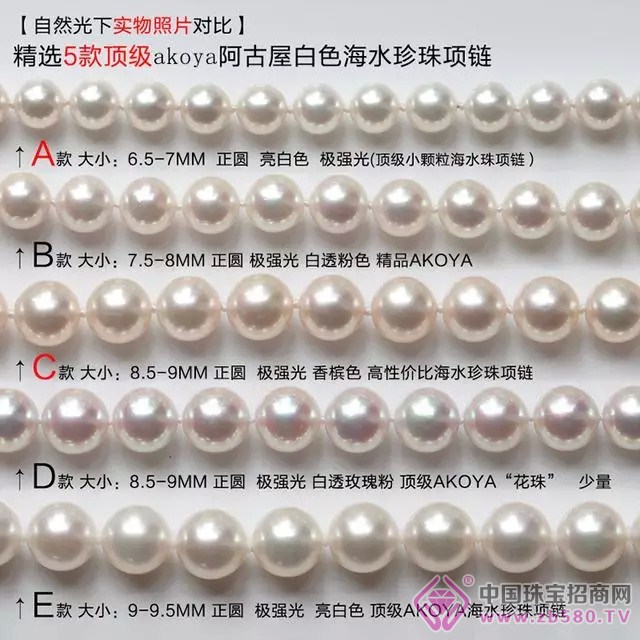Recently, Akoya in Japan has once again become popular in the jewelry industry. Many people ask Akoya pearls to be small and look like freshwater pearls. They are still so expensive. Why are they so hot? Want to know what is special about Akoya Seawater Pearl? Does Akoya Seawater Pearl have different classifications? Let me explain it to you.

Meet Akoya pearls, starting with classification
Japan's Akoya is a species belonging to seawater pearls. The mother of the oysters is Markov's shell. This shell is called Akoya in Japan and is actually a transliteration of Japanese. Japan's Akoya seawater pearls and China's Nanzhu are actually the same variety. The nuclear culture technique of seawater pearls was invented in the middle of the last century when Japanese people practiced in China for many years. The Marsh babe species was introduced from the wild northwestern sea at that time and was propagated. From this point of view, Nanzhu is the originator of Akoya. Japan's Akoya pearls are mainly produced in Japan's Mie, Hiroshi, and Seto Inland Sea in Ehime Prefecture.

Why is Akoya Pearl so expensive?
1, natural beauty is difficult to give up
The glare of high-quality Akoya pearls is very fascinating, and the small light bulbs are not worthy of the name.
2, the output
In terms of yield, a Marsh's shell can only harvest one Akoya pearl seawater pearl, and the yield is much less than that of freshwater pearls (a freshwater pearl has a mother-of-pearl 3-5), and because of the instability of seawater, Akoya pearl needs more. Carefully cultivated, so the same quality sand Akoya pearls are more than five times more valuable than freshwater pearls. Akoya pearls are more critical to the growing environment. Akoya pearls are selected because of the low local water temperature. They are strong maternal oysters. They have long breeding time and strict breeding standards, but they need to be cultured in seawater not less than 13 degrees Celsius. Ocean currents and plankton are very abundant. With the destruction of the world's marine resources, the resources of the excellent mother-shell growth environment are becoming less and less. The waters suitable for breeding high-quality Akoya pearls are also decreasing year by year. Import and export, need tariffs and freight, relatively high cost of freshwater pearls

How to choose akoya pearls?
1, luster
Akoya pearl has the name "small light bulb" and is a strong variety in all cultured pearls. Even in very dimly lit areas, high-quality Akoya pearls can still emit a very bright luster by reflecting weak light. When you purchase, you should choose a light bulb like a light bulb.
2, size / diameter
Akoya pearls are generally between 4-9 mm in diameter and rarely 9-10 mm in size. Generally, the size of Chinese Akoya seawater pearls is between 4-8mm, and the size of Japanese Akoya seawater pearls is between 6-10mm. Compared with freshwater pearls and South Sea pearls, Akoya pearls are smaller and 6-8mm is the most common, so Akoya pearls are very suitable. Made into a pearl necklace or earrings and other elegant and elegant pearl jewelry.
3, the thickness of the nacre
The trading guidelines for akoya pearls are that the thickness of the bead layer must be 0.35 mm, and the thickness of the nacre of the named flower beads is >0.4 mm, but the Akoya pearls that have reached this thickness so far are still rare.
4, with color / stun
Pink, silver and green, pink is the most common.
5, shape / roundness
The shape is round, oval, baroque. The shape is required to be rounder and better, and the perfect circle is better.
6, twist
Try to choose less. In general, the larger the particle size, the thicker the bead layer, and the more flaws on the surface. Because the longer the growth time, the sputum formed in the mother-of-pearl will increase accordingly.

Tft Mobile Screen,Touch Display Module,Tft Lcd Tv Monitor,3.2 Inch Tft Lcd
Shenzhen Yetai Optoelectronics Technology Co.,Ltd. , https://www.yetailcd.com